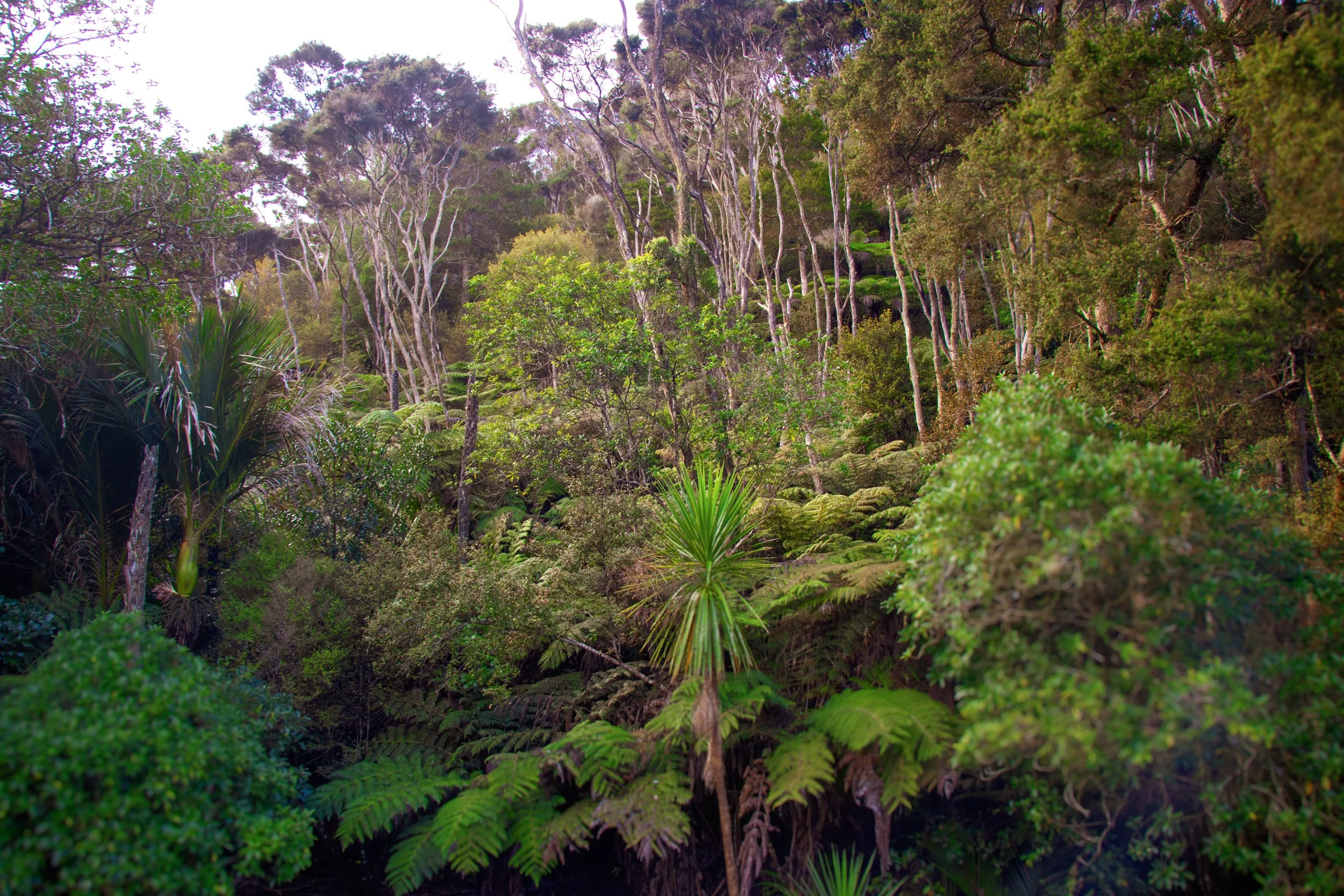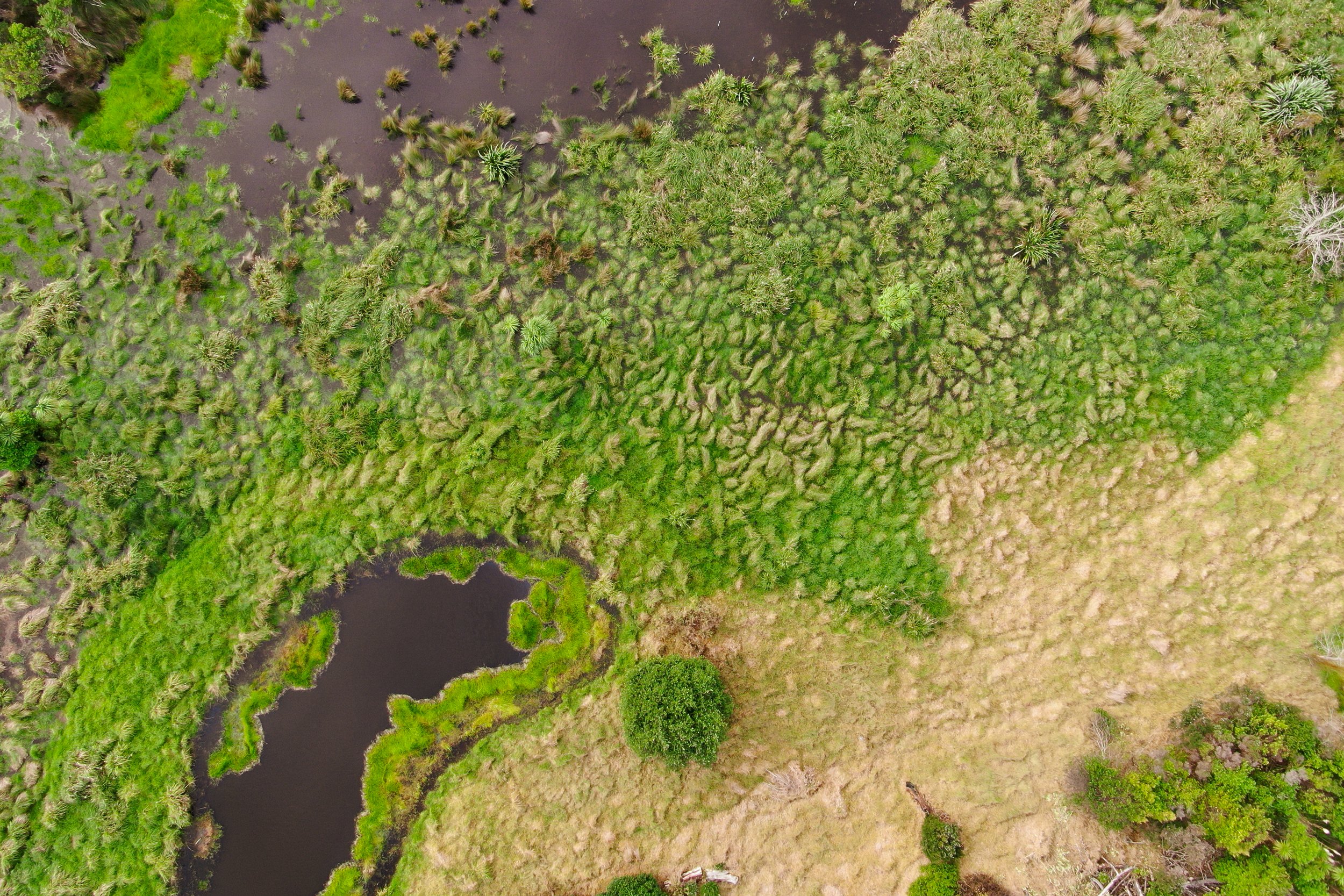Planting for clean streams
As you know at Kauri Park we call ourselves ecovitalists because we want to see New Zealand’s ecosystems teeming with vital life. And what does all life need? Water. The better the quality of the water, the better the quality of all life.
The most biodiverse ecosystems on earth are where water meets land
212,000 kilometres
This is the total distance of Aotearoa’s waterways that need to be revitalised and restored to vital life. It’s no small feat.
At Kauri Park we feel lucky to have worked closely with New Zealand’s waterways and gained valuable expertise and capability along the way. That’s why we created Mission 212. It’s our way to share our passion and knowledge in the hope that we can inspire anyone and everyone who loves water to help us tackle this massive number, stream by stream, estuary by estuary, river by river.
So let’s dive into stream quality and talk about how planting a stream ecosystem can bring everything in and around it back to life.
Looking after a riparian ecosystem
A clean stream is the result of its surrounding ecosystem which means we have to guard against contamination and protect its purity in multiple ways, including:
Fencing streams to keep stock out
Guarding against runoff - preventing sediments and chemicals from entering the stream
Improving downstream and receiving ecosystems in clarity and quality
Creating strong cover through canopy plants
Planting to stabilise banks and improve habitat with upper bank plants
Using water-loving plants to absorb carbon dioxide and bacteria, improve water quality and encourage fish and other wildlife
Providing shading and cooling to waterways which protects from thermal pollution.
Increasing biodiversity to surrounding land use
Keeping litter and waste out
Three key zones to consider when planting streams
Each stream project will differ and planting plans always need to take into account the soil types, moisture content and existing wildlife habitat of the particular environment. Broadly we should consider the role of three key plant types:
1. Canopy
Canopy plants protect a stream from above and encourage bird life, insect life and expanding habitats. They play a crucial role in freshwater riparian ecosystems by providing shade and reducing the temperature of the water, which can help maintain suitable conditions for fish and other aquatic organisms. Additionally, canopy plants help prevent erosion along riverbanks and reduce the risk of sedimentation, which can negatively impact water quality. These plants also provide habitat and food sources for a variety of wildlife, including birds and insects. In addition, the roots of canopy plants can help stabilize the soil, prevent nutrient runoff, and provide additional cover for aquatic species. Overall, the inclusion of canopy plants in the planting of freshwater riparian ecosystems is vital for maintaining the health and sustainability of these important ecosystems. Start with some star players like Totara (Podocarpus totara), Kowhai (Sophora microphylla) Porokaiwhiri (pigeonwood) and Lacebark (Hoheria populnea) Kanuka (Kunzea ericoides).
2. Upper bank
Upper bank plants also play an essential role in freshwater riparian ecosystems by stabilizing the soil and reducing the risk of erosion. These plants have deep roots that help hold the soil together and prevent it from washing away during heavy rainfall or floods. They also help filter runoff from adjacent land, reducing the amount of sediment and pollutants that enter the water. In addition, upper bank plants provide important habitat for wildlife, including small mammals, reptiles, and insects, which in turn provide food for larger animals. Furthermore, these plants contribute to the overall aesthetic value of the riparian zone, creating a visually pleasing and diverse landscape. Overall, including upper bank plants in the planting of freshwater riparian ecosystems is crucial for maintaining the health and stability of these important habitats. Stabilise and enrich the soil, and prevent runoff, with hardy trees such as Manuka (Leptospermum scoparium), Cabbage tree / Ti kouka (Cordyline australis) and Whitey wood / Mahoe (Melicytus ramiflorus).
3. Water dwellers
Finally we have our water lovers, the plants that thrive in moist and damp soils, often forming thick sturdy trunks from matted roots and old stem bases. Water dwelling plants, such as submerged aquatic vegetation and emergent plants, are essential components of a healthy freshwater riparian ecosystem. Submerged aquatic vegetation provide important habitat for a variety of aquatic species, including fish, crustaceans, and waterfowl. These plants also help oxygenate the water and reduce nutrient levels, which can prevent the growth of harmful algae blooms. Emergent plants help stabilize the shoreline and provide important nesting and feeding habitat for waterfowl and other wildlife. They also help filter runoff from adjacent land and can improve water quality by removing excess nutrients and sediment. Water dwelling plants are also important indicators of the health of the ecosystem, as changes in their populations can indicate changes in water quality or other environmental factors. Overall, including water dwelling plants in the planting of freshwater riparian ecosystems is crucial for maintaining the health and biodiversity of these important habitats. Here we look to the Carex family (Carex lessoniana, Carex secta, Carex virgata), the vigorous clumping rushes and flaxes like Wiwi (Juncus edgariae ) and Harakeke (Phormium tenax) and coastal cutty grass (Cyperus ustulatus). These are our plant friends that play well with fish and insect life and can help improve water quality by absorbing pollutants (bacteria, CO2 and some chemicals).






